I'm amazed at how superior your vanilla is!
– Des, The Grommet
Have you noticed that the cost of cookies, cakes and ice creams have been creeping up? Most desserts use vanilla, and vanilla prices have skyrocketed since 2014. Could that be it? Absolutely! And why is vanilla so expensive now? The answer may surprise you. Read on.
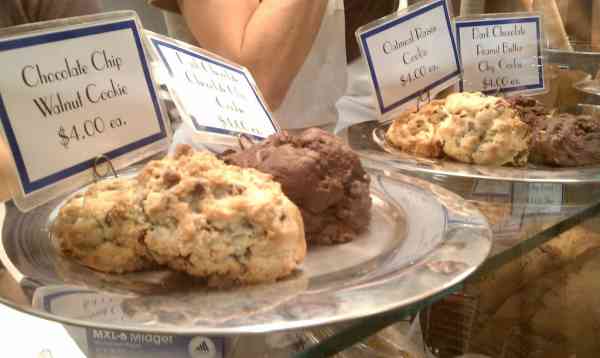
Tropical farmers who grow coffee, cacao, vanilla, sugar and a few other crops, constantly face fluctuating prices for their crops due to supply and demand. And because vanilla is by far the smallest of the tropical luxury crops, the vanilla industry faces dramatic fluctuations.
Between 2005 and early 2014, there was an overabundance of vanilla. As a result, the price for both green and cured, dried 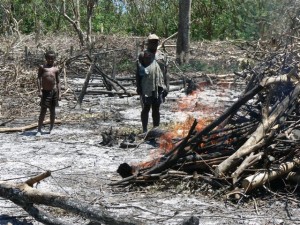 vanilla dropped to very low levels. Because farmers weren’t making enough to survive, many finally burned their vanilla vines and switched to growing other crops. This eventually led to a vanilla shortage, and with the shortage of vanilla beans, prices shot through the roof!
vanilla dropped to very low levels. Because farmers weren’t making enough to survive, many finally burned their vanilla vines and switched to growing other crops. This eventually led to a vanilla shortage, and with the shortage of vanilla beans, prices shot through the roof!
During periods like this a “feeding frenzy” occurs as rumors abound, and the middlemen in vanilla-producing countries take advantage of this opportunity to put more money in their pockets.
You’d think that when you see the cost of vanilla go up that the farmer would benefit, but that is not necessarily the case, though in the case of this crisis, the farmers have done well. To increase their margins, middlemen and those who invest in vanilla beans in vanilla producing countries, sometimes hold the beans off the market to force prices up. The lowest level of middlemen are those who drive trucks into the bush to collect the beans and who start the vanilla curing and drying process. They don’t make a big profit so when there is a shortage they benefit for a change. It’s the bigger middlemen and speculators who make the lion’s share of the money. Unfortunately, as is the case in this current crisis, speculators bought up the 2015 Madagascar crop, which was small, and later sold it at very high prices to manufacturers and traders who were desperate for beans.
The companies in industrialized countries that depend on vanilla beans or extract either to sell or to use in manufacturing, will pay whatever they must to keep their businesses going. The farmers may or may not benefit much from the higher prices. However, if they have continued to grow vanilla, they can finally earn a living wage or even a decent windfall as the trickle-down of funds helps them.
Madagascar, the world’s largest producer of vanilla, is currently experiencing high tension and chaos, enough so that there are travel advisories to not visit certain areas of the country. The current hoarding and selling of bad vanilla makes the country quite volatile. While the Malagasy people are known for kindness and the country was considered safe most of the time, things have changed in the last nine or so years and it is important to check with government posts before visiting.
The green vanilla beans, known as vrac, will come in to the processing houses, from the countryside beginning in May of 2018, which causes huge tension around prices. While there was good flowering in Madagascar this year — which meant the possibility of beans in the range 2000 – 2300 metric tons — Cyclone Ava hit the coast of Madagascar during the flowering season, which means the flowers were knocked from the vines. When the beans are not quite ready to pick, they will be harvested, as farmers and middlemen want to make as much money as possible when the prices are high. This means the quality will be very poor.
In Papua New Guinea, a fairly new but significant producer of beans and ground vanilla bean powder, the normal crop is 350 metric tons or more. Because of the low prices for so many years, the farmers stopped growing vanilla but they’re back in the game and are producing bumper vanilla crops. Crop quality varies however, as they are harvesting too early as well to keep up with the demand and to make more cash while they can. Now that pricing information is easily available on the Internet, they expect — and hope to sell — their vanilla beans for more money than Madagascar, an unprecedented change as Madagascar was able to sell their beans for more money than any other country for a long time. East Africa and Indonesia have also ramped up their crop production, so there is actually a large stock of vanilla beans available. The problem? The prices are so high that most buyers don’t want to purchase more than a little at a time as the prices could drop suddenly.
Mexico, which once provided the vanilla beans to the world, as Mexico is where vanilla was domesticated and where they had the monopoly until the late 1800s, now only produces 30 – 35 metric tons of unprocessed vanilla a year at the most! This vanilla is already promised a year in advance.
Adding to the ongoing problems in the vanilla industry, many of the corporations who produce frozen desserts and dairy products, will switch to “other natural flavors,” (which can mean either imitation vanilla or vanilla flavor made from vanillin drawn from plants other than vanilla beans), rather than pay the higher prices. When the prices drop, many will not switch back to using pure vanilla, further undercutting the industry.
There is more stability when a floor price is set for vanilla as it used to be in Madagascar. However, vanilla was deregulated in the early 1990s and we have seen swings such as the current one since then. It appears that the prices will be elevated at least through most of 2018, but there is no way to know this for sure or when prices will drop.
While the price increases will hit everyone’s pocketbooks, the cost of vanilla all by itself won’t actually drive up the cost of baking and the treats we love by a large margin. We will likely see an uptick in cost or, depending on the company, a switch to a cheaper brand of vanilla or even imitation. Artisan bakers and cooks would prefer to use the best because they know that cheaper quality ingredients means lower quality of the finished product. Unfortunately, given the current situation, quality is likely to drop.
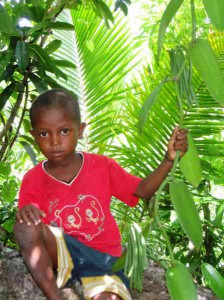
Under normal circumstances we do our best to buy vanilla beans in bulk at fairly traded prices. This is true as well with our extracts (but also because we use 20% more vanilla bean extractives than required by law). However, during a crisis such as this one, all farmers are making more money and sourcing good vanilla beans is extremely difficult. As we cannot afford to purchase in large volume when prices exceed $500 a kilo, we purchase whatever is available. With the price increases, the farmers who have continued to grow vanilla – despite the low prices – will earn more. We at The Vanilla Company fully support this – even though our margin-of-profit drops. However, we do not support the cutting of green vanilla as traders, manufacturers and consumers lose because quality drops despite the high cost.
While higher prices can be a significant challenge for specialty food producers and for those of us who use vanilla in home baking and cooking, it’s important to keep in mind that as home bakers, you don’t use vanilla in cups, but in teaspoons and tablespoons. You don’t need to buy a lot! This is not the case for artisan producers of health products, bakery goods and chocolate, so high prices are a big challenge and products using vanilla become more expensive.
And, while it may stretch our budgets, higher prices mean that the families on farms who are currently producing vanilla will have more to eat or new shoes or the children can attend school and get medical care.
The downside, of course, is that high prices mean greater danger for the growers and small middlemen. They stand the risk of being robbed or even murdered for their money as the prices are so high that vanilla sales often become as dangerous as selling illicit drugs.
Because vanilla is not traded on the International Commodities Market (coffee and chocolate are traded in millions of containers annually as opposed to less than 3000 metric tonnes for vanilla), it doesn’t have the same protections as coffee and chocolate farmers have. When there is a glut of coffee, farmers are guaranteed a base price. This doesn’t exist for vanilla growers. (Until recently, cacao growers also were paid a base price, but that has been rescinded, placing smallholder cacao growers in a very compromised position.)
During this very challenging time we at The Vanilla Company greatly appreciate your support. In addition to continuing to promote the use of pure vanilla, I continue to speak locally, nationally and internationally in a serious attempt to save pure vanilla from extinction. When the prices collapse, the cycle starts over again. At some point so many manufacturers will have shifted to imitations that the industry will die. I have committed to continue to fight for the survival of pure vanilla. It is my hope that you too will feel passionately enough about natural tropical products to support them through wise purchases.
Here at the Vanilla Company, our mission is to provide our customers with premium-quality vanilla extracts and excellent customer service. Our vanilla extracts contain vanilla beans with a high vanillin content. This gives our extracts an excellent depth of flavor that is so strikingly noticeable that it is not uncommon for us to get reviews like the one below.
We use sugar cane alcohol, vanilla bean extractives and distilled water. Period! All of our vanilla products are gluten-free.
I was given a small bottle of Rain’s Choice in a gift basket and I have been hooked ever since. The flavor makes all of my baking so much better! I will never use grocery store vanilla again!
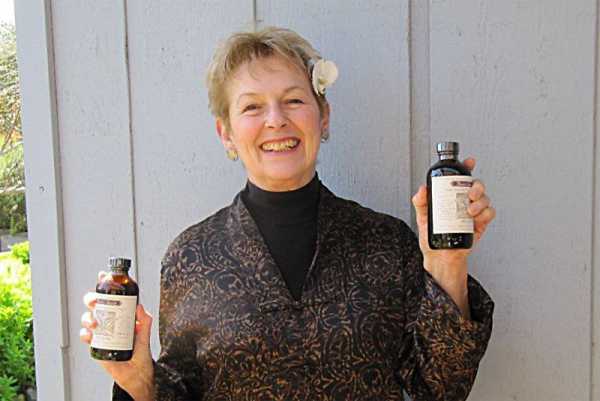
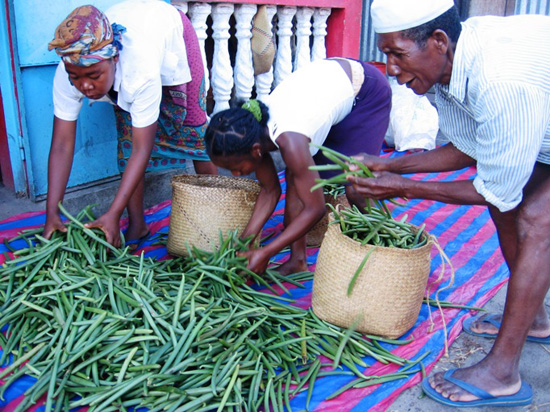
© 2021. All Rights Reserved
Designed/Developed by Kat & Mouse
16 Responses
Thanks for the thought provoking article. Put me on your email list
Is McCormack vanilla manufactured in Mexico?
No, McCormick and Company, Inc. has its headquarters in Maryland and makes their extracts there. In fact, there are only a couple of extract makers in Mexico and their companies are quite small. 99.9% pf the so-called vanilla extract coming out of Mexico is actually imitation no matter what the labels say.
I do believe you are right about that. I recently tried the Danncy Mexican vanilla but was almost immediately put off by it’s lack of a real vanilla taste. Their label says “vanilla bean extractives in water and natural flavors”. What these other flavors are is mysterious. The aroma and taste are quite potent, but it seems more coconutty to me plus the aroma reminds me of marine supply store. If it’s vanilla flavor you want, why are “other flavors” even part of the mix? I have heard from several people that the Danncy product they actually purchased in Mexico is quite different from what you get online even though it says “product of Mexico”. Like I said in a previous comment, Restaurant Depot’s Chef’s Quality imitation vanilla fills the bill for now, Seems kind of decent. $50 for a 32 ounce bottle of the pure vs $2 for the same quantity of imitation made the choice a no brainer. Until sanity is restored I will not be ripped off by these third world banditos.
Albert, I completely understand and appreciate your position of not wanting to pay large sums of money for a product that isn’t critical for day-to-day use. The Danncy Mexican vanilla you refer to is actually imitation with additional additives, despite what it says on the label. The bigger issue is this: Of the three most popular “luxury crops” from the tropics — coffee, chocolate and vanilla — vanilla is the only one with viable imitations. This puts it in direct danger of being lost forever. Why? Because increasingly manufacturers and consumers turn to imitations when prices are high. When prices drop many manufacturers and some consumers don’t switch back to pure vanilla. This causes the prices to remain low enough that farmers eventually tear up their crops and grow something else or migrate to cities looking for work. When there is a major storm or a shortage, prices go back up again and the cycle repeats. However, there is another looming factor in all of this: the changing climate. All three of these iconic luxury crops are facing critical issues with the changing climate. IF vanilla is increasingly difficult to grow, and IF there isn’t a major demand for it, farmers will stop growing it. We will also see an even greater migration of farmers moving to big cities looking for work. When this occurs, we will lose pure vanilla forever or, at the least, it will be rare and veryexpensive. Now that can’t be too serious can it? Well, it depends on how you view the loss of iconic crops. We already are experiencing a loss of bio-diversity in our crops. We need look no further than the great potato blight in Ireland in the mid-1800s to see what happens when we lose bio-diversity. Only one variety of potato was grown in Ireland. When the crops failed, thousands of people starved and there was a mass-migration to the cities, primarily to the US, where people were desperate for work. What is easy to lose is our perspective of an exceptionally diverse variety of foods that exist on our planet but also how many are being lost that we never hear about unless a crisis occurs. There were thousands of apple varieties in the early 20th century. We now have less than a hundred varieties, many of which may look lovely and last well, but the flavor is insipid. So yes, it is very easy to pick up cheap imitation vanilla products that more-or-less taste like vanilla, but it undercuts the growers who make pennies on the dollar growing the products the majority of the time. Put once a commodity becomes extinct, just like the many animal species we are currently losing because of loss of habitat, poaching and climate change, that’s it — it’s gone forever. My personal decision is to do what I can to promote bio-diversity, and the protection of crops that have real value as a medicinal as well as bring a far greater bouquet of flavors than the imitations, while also supporting tens of thousands of growers in regions in the developing world where unemployment is high and standards of living are poor. It’s a complicated conversation, one that I believe is important.
Thank you so much Patricia for the excellent article! I also expect the prices to crash but who knows when. It would be much better to have a minimum price so the growers get a decent share for their work instead of the speculators.
There used to be a base set price for growers in Madagascar. As Madagascar was considered the “bellweather” of vanilla and pricing, other countries copied whatever they did. However, pricing was deregulated in the 1990s. I truly think it’s a wise idea as we know that the growers at least can count on a minimum wage. I don’t know if it would work to bring this concept back or not, but I’m talking to industry people about it. Thanks for your comments!
Great article.! Please could you tell me if you have ever tried Tahitian vanilla, and if so, what you think of it? Thank you.
I am one of the people who helped make Tahitian vanilla popular in the US. It’s a different species from the most used Planifolia vanilla. It’s a combination of planifolia and odorata and is very fruity and floral. It is especially good in cream desserts, fruit desserts and seafood dishes. You can learn more about it on my site in the “Learn” section under “Learn About Vanilla.” I have sold Tahitian vanilla beans and extract since 1986.
There is nothing quite like vanilla ice cream made with real vanilla (pod or extract). Simply the best! So this issue about the current vanilla crisis is important to many people – not just the business sector but consumers and those who love to make ice cream as a hobby. Thank you for your article – it is written with insight and passion and one of the best I have read.
Seriously, the imitation stuff really isn’t that bad. Much better than I expected. Yesterday at Restaurant Depot a 32 ounce bottle of their pure vanilla was selling for $50 while the same size of the imitation stuff was $2. Several months ago I tried Danncy pure Mexican vanilla. Very potent flavor and aroma…………. if you’re a fan of formaldehyde. I love the pure stuff, don’t get me wrong and eventually I may get back into using it but for now I am not going to be ripped off by these third world banditos.
I have heard that Global Climate Destabilization may have a severe impact on vanilla (and chocolate) and this is part of the reason why the Mars company has signed the letter to ask President Trump to reconsider his climate policies. From your point of view, I know you are not a climate scientist, but would like your opinion on the matter.
Aldous, very important question you’ve brought up. Thank you! The tropics are absolutely facing major problems due to the changing climate, and it isn’t limited to chocolate and vanilla, though it is absolutely impacting both of these crops. Last year I was returning from a conference on vanilla in Costa Rica and was seated next to a very interesting man. Turns out he was a coffee grower from Alajuela Province, one of the primary coffee growing regions in Central America. He had just torn out 1000 hectares of coffee because diseases triggered by the changing climate meant it cost more to care for the coffee bushes than he could earn from selling his coffee. Although he didn’t say this, it was clear that with a plantation that large, he was growing a sun-grown hybrid variety, which is especially vulnerable. In Madagascar, the country had experienced several years of drought before being slammed in early March by Category 4 Cyclone Enawo. Clearly one cyclone does not prove that the climate is changing, but what is crystal clear is that it is increasingly difficult for tropical farmers to produce the crops we love and depend upon. Mars has been exemplary in that they developed some hybrid-cacao trees that, at least theoretically, will fare better as the climate changes. Interestingly, they did not patent the trees as they wanted them to be available to all farmers. Hershey’s also developed a hybrid at about the same time, but patented their trees. Sugar, bananas, pineapples — most of the tropical crops — are subject to climate change. One of the biggest problems, is in order to ensure that these products have consistent flavor profiles, we have massively cut bio-diversity and focused on only a few cultivars. Bananas are a case-in-point now that the Cavendish, which replaced another favored cultivar, is endangered. This is a serious mistake that we should have learned when the potato famine struck Ireland in the mid 1800s. Hopefully we’ll re-introduce more bio-diversity to protect future crops. I highly recommend that you, and anyone who reads my response here, read “Bread, Wine, Chocolate: The Slow Loss of the Foods we Love” by Simran Sethi. It goes into far more detail than I can here and is a fascinating read.
With vanilla beans selling at over $600 a kilo at source in Madagascar and some other countries, most artisan producers of beer, baked goods and ice cream cannot afford the price of beans or extract. The food industry works on a very small margin-of-profit. The big producers of dairy and frozen foods have already switched to imitations or other natural flavors as the price for pure vanilla is so high. So yes, if you are making a batch of cookies or a cake now and then it’s not big deal, but for those who earn their living producing quality products, it is a very big deal.
Thank you. I now understand the rI sing cost for vanilla. Such a well-written article.
Thank you Peggy Grover. I believe in transparency. End sellers like us are not making hand-over-fist despite the high prices. While there is always a very small margin-of-profit in food sales, when there are issues such as the current crisis, a lot of small companies like ours go out of business. It’s a tricky balance as sales understandably drop.